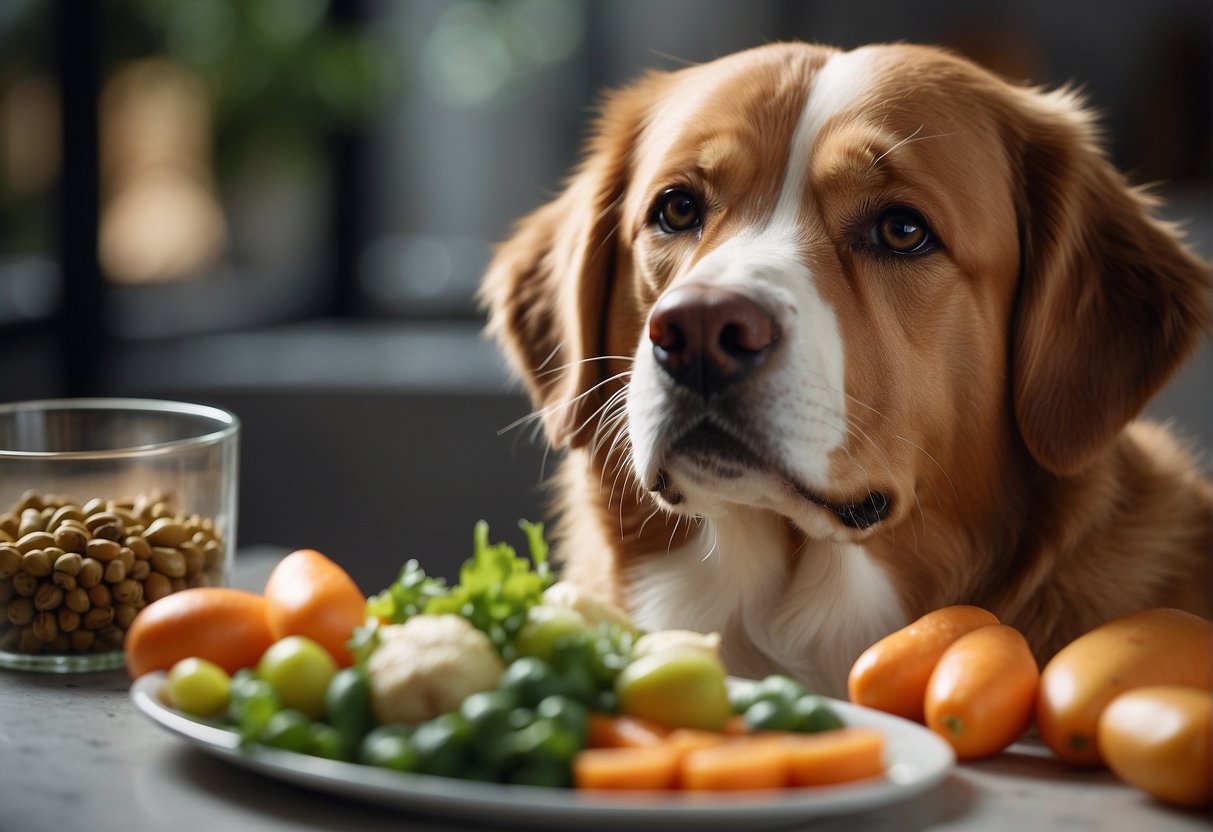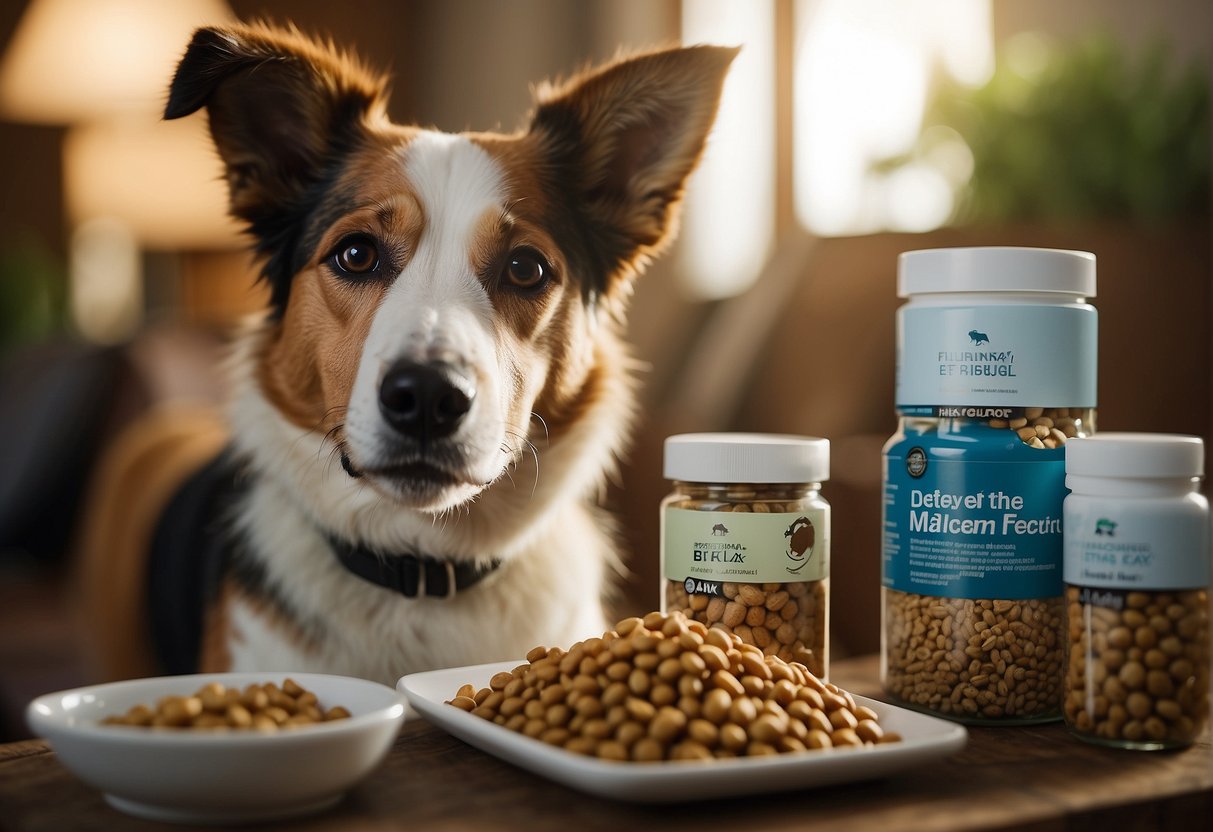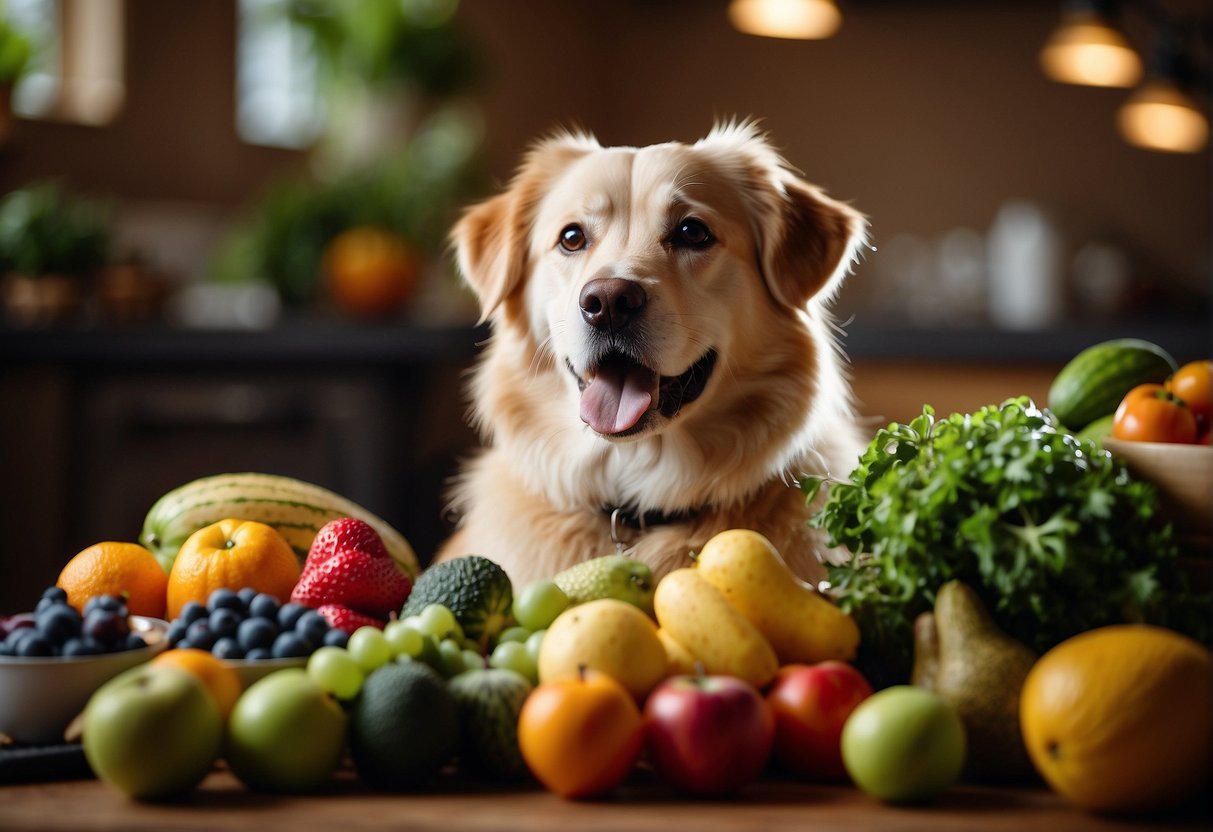When you’re considering the dietary needs of your furry friend, understanding the role of vitamin A is crucial for their health and wellbeing.
Vitamin A, a fat-soluble vitamin, serves many vital functions in your dog’s body, such as supporting vision, bolstering the immune system, and promoting growth.
However, an imbalance, particularly a deficiency, can lead to serious health issues.
Just as in humans, antioxidants like vitamin A are vital for maintaining good health in dogs, playing a role in everything from reproduction to bone health.

Choosing a raw diet for your canine may offer a path to delivering these essential nutrients, but it’s important to know how to balance this diet properly to prevent nutritional deficiencies.
Since raw diets are not inherently complete and may require careful planning, it’s essential to be aware of the signs of vitamin A deficiency, which could prevent issues before they become more serious.
Spotting early symptoms such as dry eyes, poor skin, and coat condition can help ensure you take swift action.
Prevention is always better than cure, and with a balanced homemade diet or a commercially prepared feed, you can avoid the pitfalls of vitamin A deficiency.
Incorporating sources of vitamin A, such as liver or fish liver oil, in moderation within a guided raw diet can help keep your dog’s health on track.
Embracing this proactive approach to your dog’s nutrition can lead to a happier, healthier pet and give you peace of mind.
Identifying Vitamin A Deficiency in Canines

Understanding how to spot vitamin A deficiency in your furry friend is crucial for their health and happiness.
Let’s explore the tell-tale signs that can indicate your dog might be lacking this essential nutrient.
Clinical Signs and Symptoms
Vitamin A is vital for your dog’s overall health, affecting their vision, skin, and coat.
A deficiency might manifest as night blindness, where you notice your dog has difficulty seeing in low light or darkness.
You may also observe signs such as dry skin, a dull coat, or even weight loss.
Some canines might show clinical signs including vomiting, weakness, and irritability, which should be taken as a hint to check their diet and overall health.
Importance of Early Detection
Catching symptoms early on can prevent long-term damage and help maintain your dog’s quality of life.
Early detection is key—should you notice any unusual changes in your dog’s health or behavior, it’s best to act promptly.
Consistently monitoring for symptoms like changes in vision, skin condition, and behavior can alert you to potential deficiencies before they progress.
Seeking Veterinary Guidance
If you suspect your dog is not receiving enough vitamin A, or if you’re seeing signs of deficiency, consult with a veterinarian.
They can perform blood tests to confirm a deficiency and provide you with guidance on how to adjust your dog’s diet.
Relying on professional advice is the best way to ensure your dog gets back on track to good health.
The Role of Raw Diet in Preventing Deficiency

When providing your dog with a balanced diet, it’s essential to understand how a raw diet can play a pivotal role in preventing vitamin deficiencies, particularly vitamin A. Here’s how you can utilize raw foods to ensure your furry friend stays healthy.
Benefits of Raw Foods
Raw diets for dogs often consist of fresh, whole ingredients that are nutrient-rich and unprocessed.
This method of feeding can be beneficial as it includes natural sources of vitamins and minerals essential for your dog’s health.
Vitamin A, for example, is crucial for maintaining good vision, immune function, and skin health.
Feeding your dog a variety of raw meats, vegetables, and organ meats can ensure they get a well-rounded intake of these nutrients.
Incorporating Vitamin A Rich Foods
To boost vitamin A in your dog’s diet, focus on adding foods like beef liver and chicken liver, which are among the most concentrated sources of this nutrient.
Other beneficial items include fish liver oil, such as cod liver oil, which also provides vitamin D essential for bone health.
Egg yolks and salmon are more good options, offering a balance of vitamins and Omega-3 fatty acids.
Here’s a simple list of vitamin A rich foods that can be included in a raw diet for dogs:
- Beef liver – high in vitamin A and good for maintaining healthy vision and immune response.
- Chicken liver – contains essential minerals and vitamin A for skin health.
- Cod liver oil – a good source of vitamins A and D, supporting bone health.
- Egg yolks – besides vitamin A, they provide an array of other nutrients important for your dog’s health.
- Salmon – provides Omega-3 fatty acids along with vitamin A.
Avoiding Over-Supplementation
While vitamin A is beneficial, it’s crucial not to overdose as it can lead to toxicity.
Always provide a balanced diet and be mindful that supplements can add excessive amounts of vitamins, even with raw feeding practices.
Your goal should be to create a diet that naturally meets your dog’s needs without reliance on heavy supplementation.
Remember, too much vitamin A can be harmful, causing symptoms like dehydration, joint pain, and digestive issues.
If considering supplements like fish liver oil or others for added nutrition, consult with your veterinarian to determine the appropriate dosage.
By focusing on a diverse range of vitamin-A rich foods within a raw dietary framework and monitoring the amount of added supplements, you can help prevent vitamin deficiencies and support your dog’s overall well-being.
Analyzing Commercial Dog Food and Supplements

When selecting food for your dog, it’s essential to understand how to assess the vitamin A content and overall quality of commercial dog food and supplements, ensuring your furry friend’s diet is balanced and nutritious.
Labels and Vitamin A Content
Reading labels accurately is imperative to gauge the vitamin A content in your dog’s food.
Vitamins and minerals, including vitamin A, are listed on dog food labels, but the devil is in the details.
Verify that the dog food complies with the AAFCO nutritional adequacy statements, which indicate whether the product meets the established profiles for canine nutrition.
If you’re evaluating wet versus dry food options, keep in mind that these can differ substantially in nutrient concentration.
Choosing High-Quality Dog Food
To ensure your dog is getting a diet rich in vitamin A and other essential nutrients, opt for high-quality dog food.
Look for brands that go beyond the minimum requirements and work with a veterinary nutritionist to formulate their diets.
Don’t hesitate to incorporate vitamins and minerals supplements if recommended, especially if you’re balancing a homemade diet.
Remember, each dog is unique, and what works for one may not work for another — consult a vet to tailor the diet to your dog’s specific needs.
Understanding Vitamin A Toxicity in Dogs

When you feed your dog a raw diet, monitoring vitamin levels is crucial. Vitamin A is essential but in high doses can be harmful.
Here’s what you need to know about vitamin A toxicity in dogs.
Causes and Symptoms
Vitamin A toxicity, also known as hypervitaminosis A, typically arises when dogs consume too much liver or supplements containing high levels of this fat-soluble vitamin.
It can manifest over weeks or months with symptoms including vomiting, weakness, and excessive bone growth.
- Excessive Liver Consumption: High in vitamin A, overeating liver can lead to toxicity.
- Over-supplementation: Supplements, if not dosed properly, can cause vitamin A levels to spike dangerously.
Symptoms to watch for:
- Gastrointestinal Issues: Vomiting and reluctance to eat
- Musculoskeletal Problems: Limping or stiffness due to bone changes
- Neurological Signs: Seizures in severe cases
Treatment and Recovery
If you suspect your dog has vitamin A toxicity, consult your veterinarian immediately. Treatment usually involves:
- Stopping Vitamin A Supplementation: Discontinue any high-vitamin A foods or supplements.
- Medication: Your vet may prescribe medications to alleviate symptoms.
- Activated Charcoal: In acute cases, to bind the excess vitamin A and prevent further absorption.
The prognosis for recovery can be good if the condition is caught early and treated with appropriate poisoning treatment under veterinary care.
Remember, prevention is the best approach, so always consult your vet before making any significant changes to your dog’s diet or supplement regimen.
The Impact of a Balanced Diet on Overall Canine Health

A balanced diet is fundamental to maintaining your dog’s health, ensuring they get all necessary nutrients to support their bodily functions.
Essential Vitamins and Minerals
To safeguard your dog’s health, including robust skin health and proper growth, a balanced mix of vitamins and minerals is critical.
Vitamin E is an antioxidant that defends against oxidative damage, while beta-carotene, a precursor to Vitamin A, supports vision and immune health.
Your canine’s diet should be rich in meat for protein, vegetables for essential vitamins, grains for fiber, and appropriate levels of calcium and phosphorus to maintain healthy bones.
-
Vitamins: Essential for immune function and skin health.
- Vitamin E: Important for its antioxidant properties.
- Beta-carotene: Supports good vision and immune system.
-
Minerals: Fundamental for bone health and metabolic processes.
- Calcium: Essential for bones and teeth.
- Phosphorus: Works in tandem with calcium and is vital for healthy bones.
Adjusting Diet to Life Stages
Your dog’s dietary needs will change with age.
For puppies, a diet rich in calories and nutrients supports rapid growth and development.
Look for foods formulated for growth, which will be high in proteins and fats.
During pregnancy, dogs need more energy, so you may need to increase their food intake by using highly digestible foods rich in essential nutrients.
Antioxidants and the right balance of omega fatty acids can promote a healthy coat and skin throughout all stages of life.
- Puppies: Require high-calorie diets for energy and growth.
- Proteins and fats should be in higher proportions for puppies.
- Pregnancy: Nutrient demands increase.
- More calories and a higher intake of specific nutrients are needed.
Remember, always adjust the diet gradually and consult your veterinarian to ensure your dog gets a well-rounded diet suited to their specific needs.















